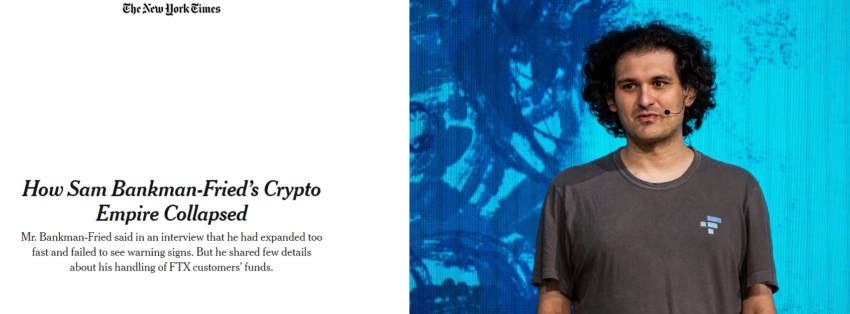New York Times Receives Flak for Questionable Bitcoin Mining Article

A Riot Platforms executive criticized The New York Times for a recent article containing misinformation about Bitcoin mining. Others in the industry joined him in criticizing the media.
The VP of mining company Riot Platforms, Pierre Rochard, posted in the New York Times on April 10 over a piece about Bitcoin mining. The publication pushed a piece discussing the cost of Bitcoin mining on the environment and conducted research to estimate the carbon emissions from the process.
Riot Platform’s VP posts Bitcoin Mining R&D
The research methodology was the main issue for Rochard, who tired that there were “lots of fictitious carbon accounts with fractional reserves” and “making books to create emissions”. The New York Times stated that they had “conducted a market-based simulation.” Rochard wants the publication to open source code for the methodology and simulation to see how it obtained the data.
The NYT identified 34 large-scale mining operations, using both public and confidential records and commissioned studies, to establish “the most comprehensive estimates to date of the largest operations’ electricity use and the ripple effects of their voracious demand.”
Riot Platforms got a few mentions in the piece. The NYT stated that the mining operation in Rockdale, Texas, used about the same amount of electricity as the nearest 300,000 homes, “making it the most power-intensive Bitcoin mining operation in America.”
The Times cited information from WattTime, a non-profit technology company. It noted that the companies objected to the method used, just as Rochard did. The objection put forward by the companies was related to how emissions were calculated. The companies stated that it “held them to an unfair standard.”
The report comes as the US increases its presence in the mining industry. Since China passed its ban on crypto mining, the industry has moved to the US. Texas in particular has become a hotbed for the industry, with state-level legislation also favoring the industry.
Others in the crypto industry also joined the criticism, suggesting that the study was poorly done and that it was unfairly characterizing some aspects of the industry.
The New York Times has previously called for an SBF piece
This is not the first time the New York Times has drawn ire from the crypto community. The publication was heavily criticized for a “breathless love letter” to Sam Bankman-Fried. The argument then was that the NYT had published a puff piece about the disgraced former FTX boss.

Critics of that piece included some high-profile figures in the industry, including Brian Armstrong, Jesse Powell, Zooko Wilcox and Edward Snowden. NYT may have to face another salvo from the crypto community if this mining story takes off in the crypto community.
Media outlets have come under fire for their coverage of the crypto industry recently. Last week, the crypto market and Binance Coin in particular took a hit after someone in the crypto market posted rumors that Interpol had issued a red notice to Binance CEO Changpeng Zhao.
The resulting FUD caused some concern in the community. Zhao and others emphatically refuted such rumors and urged individuals to be aware of the sources of their information.
Disclaimer
In accordance with the guidelines of the Trust Project, BeInCrypto is committed to objective, transparent reporting. This news article aims to provide accurate, timely information. However, readers are advised to verify the facts independently and consult with a professional before making any decisions based on this content.
























